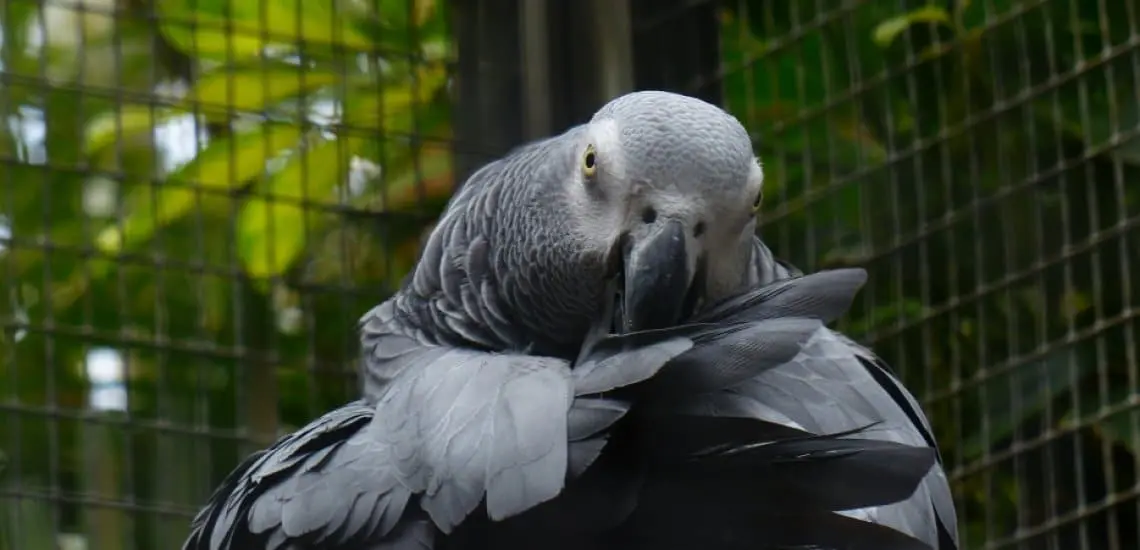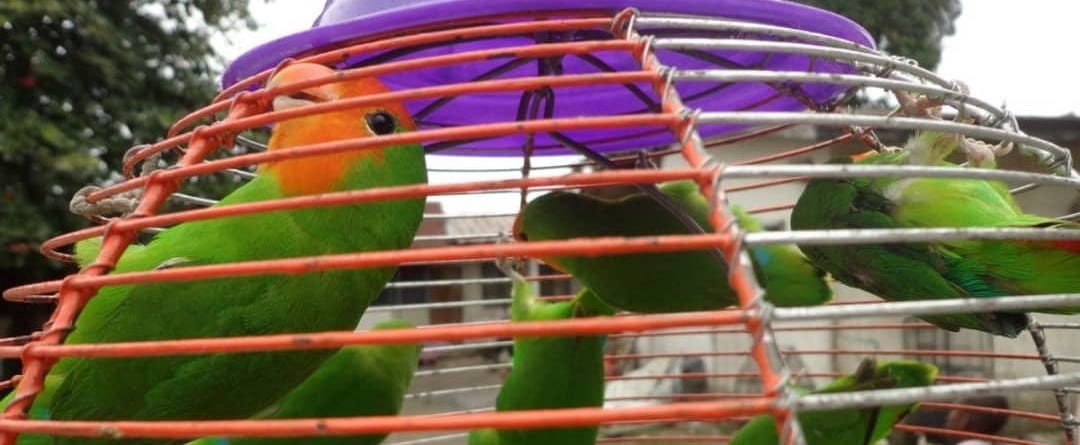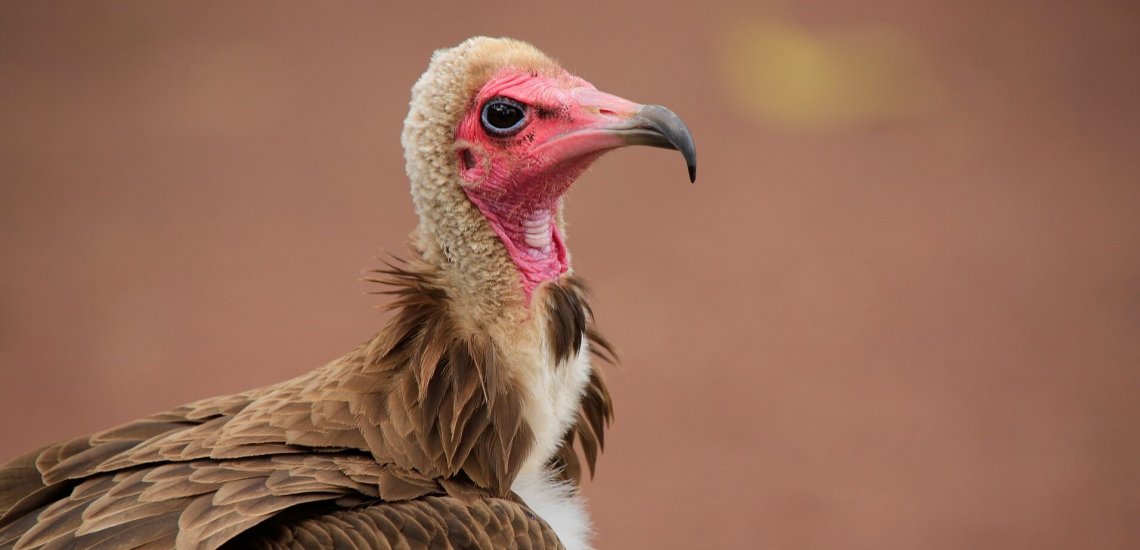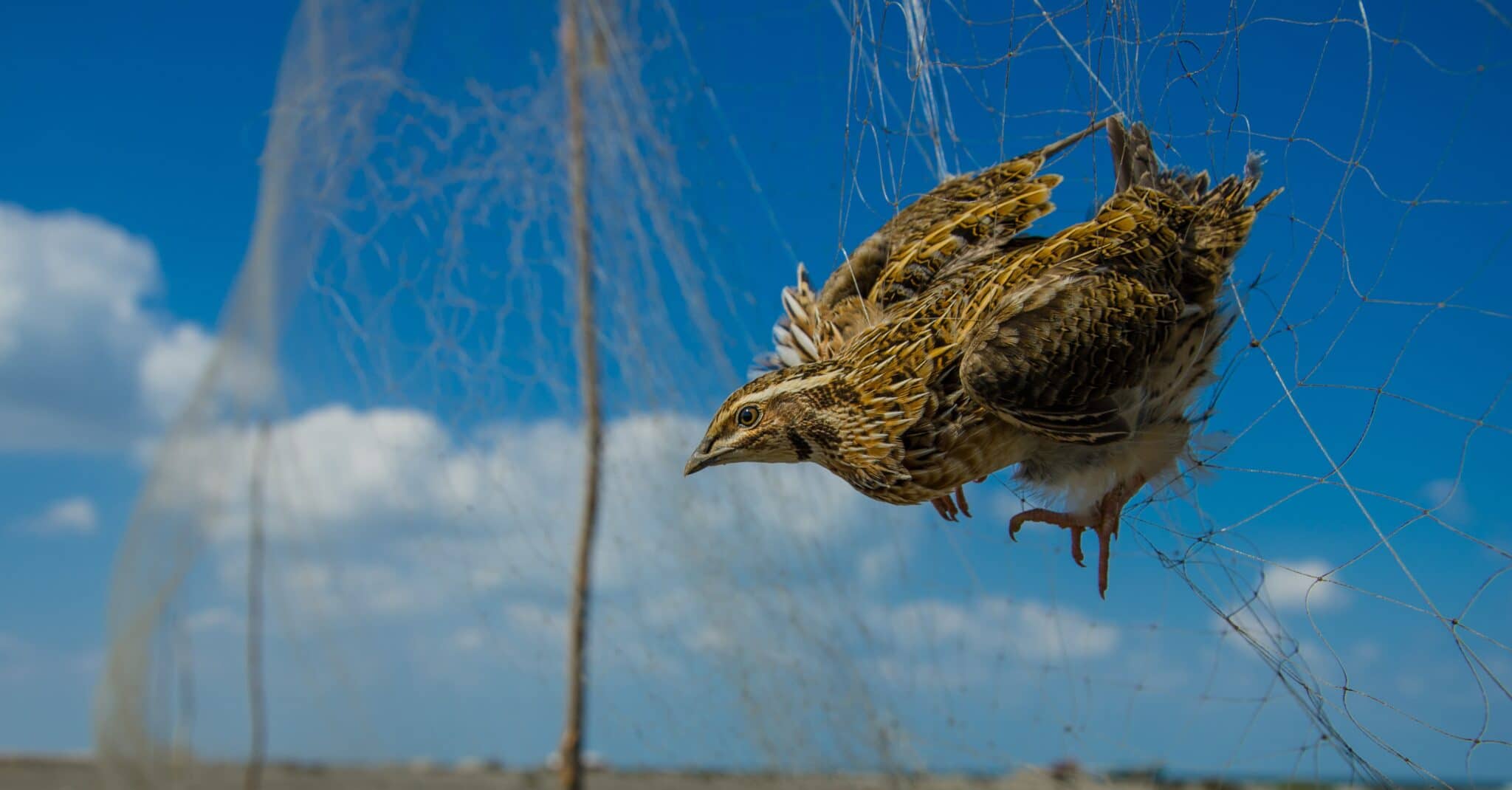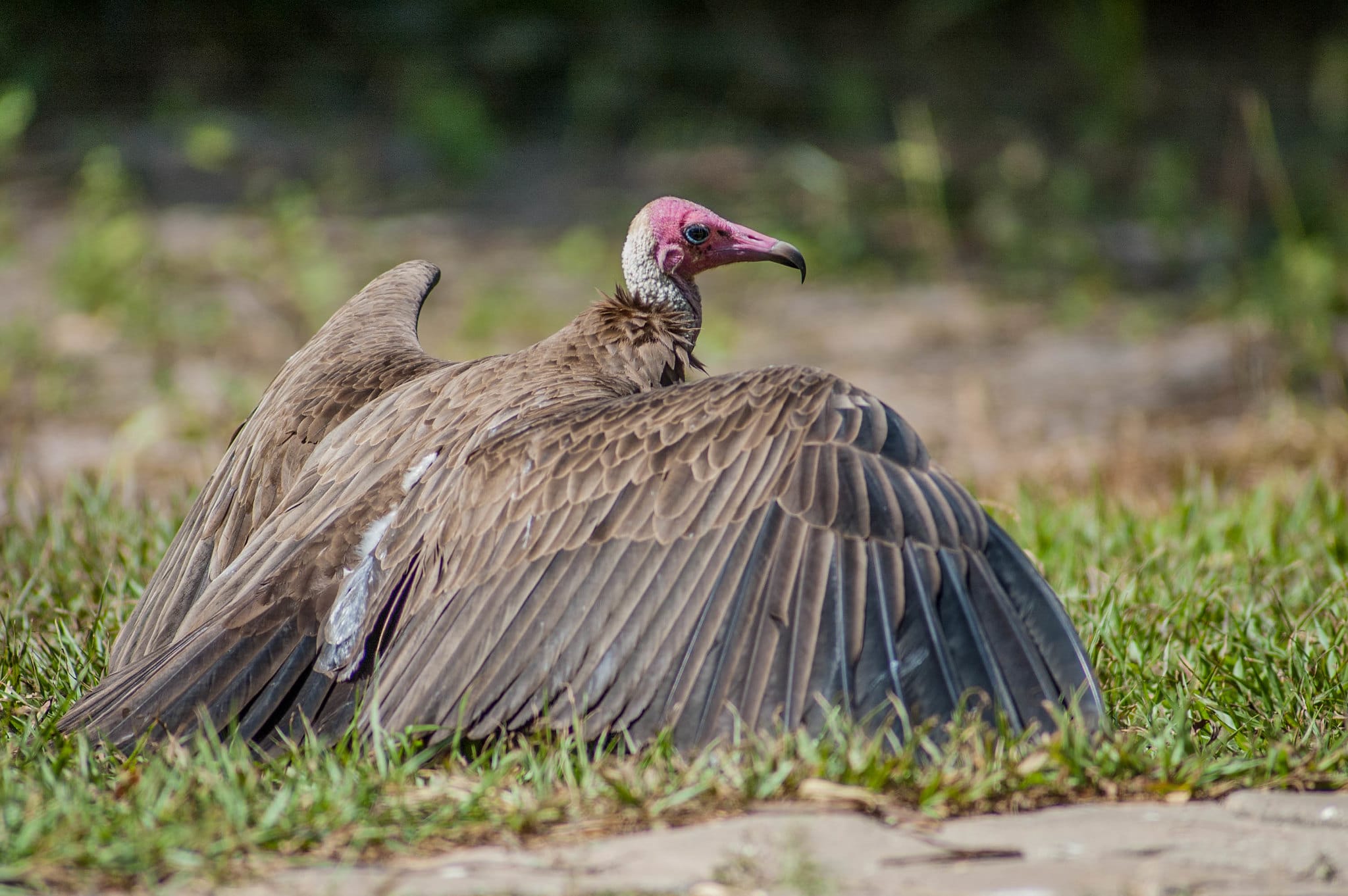Iraq – communities educated and offered alternative livelihoods
In Iraq, the trade in wild birds is widespread. At local markets, anything from owls, eagles, hawks, vultures and even some songbirds can be found caged and trussed, waiting to be sold. These birds are trapped in the wild and some of them can fetch high prices on the open market. Our national Partner, Nature Iraq, has been actively monitoring the hunting and sales operations in the markets, such as Al- Ghazl Market in Baghdad. Nature Iraq reports this to relevant government agencies on an ongoing basis and is working with local groups to develop alternative livelihoods, as well as to educate and improve awareness about overhunting and advocate to ensure better conservation outcomes for wild species.
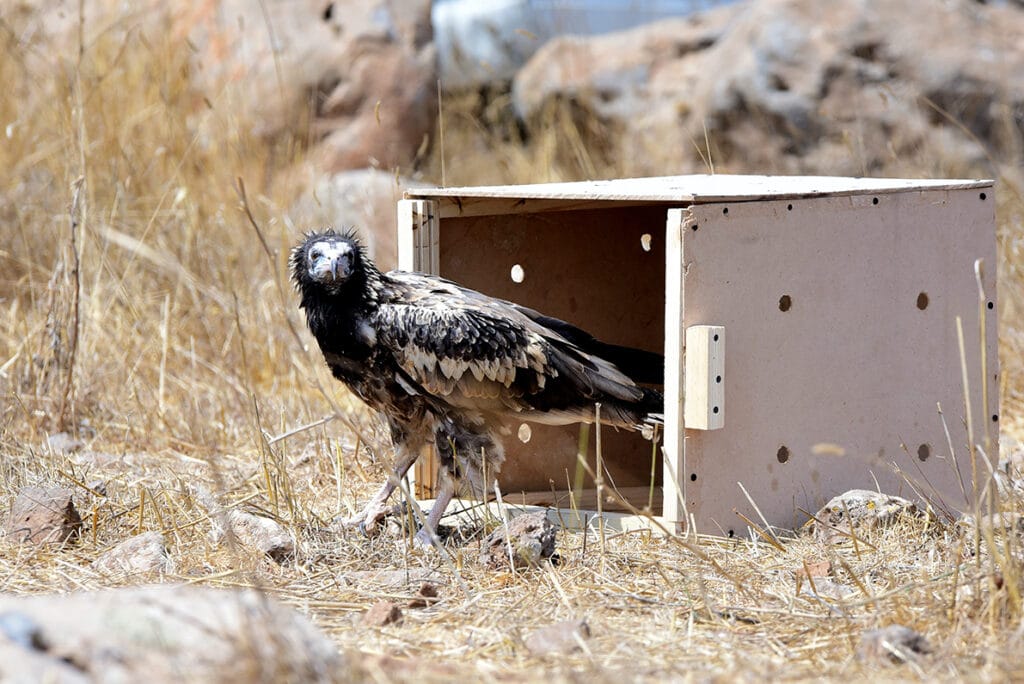
Syria – hunting laws strengthened and Egyptian Vultures rescued
Despite the immense political and economic instability in the country, the Syrian Society for Conservation of Wildlife (SSCW, BirdLife in Syria) is working tirelessly to end the illegal killing of Vulnerable species. Syria is one of the worst ‘blackspots’ for illegal killing and trapping of birds in the Mediterranean. In recent months, SSCW have been working closely with the Ministry of Agriculture and Agrarian Reform to revise and refine the laws that regulate hunting in the country. This will give greater protections to migratory birds and help to reduce the widespread poaching currently taking place. On the 16th August 2021, SSCW met with the Ministry in Damascus, as part of a special stakeholder forum, to finalize the revision of the draft law.
The SSCW team recently rescued two Egyptian Vultures that had been illegally trapped. They were able to safely release one back into the wild on the 28th August 2021 and are trying to rehabilitate and treat the other one for a later release. This Endangered species has undergone a recent and extremely rapid population decline due to illegal poisoning and persecution and the use of unsafe veterinary medical products. The estimated global population size is only 12,000 – 38,000 mature individuals, so the rehabilitation and release of these two adults is great news. The released individual, named Hermon, after Mount Hermon, the highest point in Syria, has been fitted with a GPS satellite tag provided by BPSB through the Egyptian Vulture New Life project so that we can monitor his status.
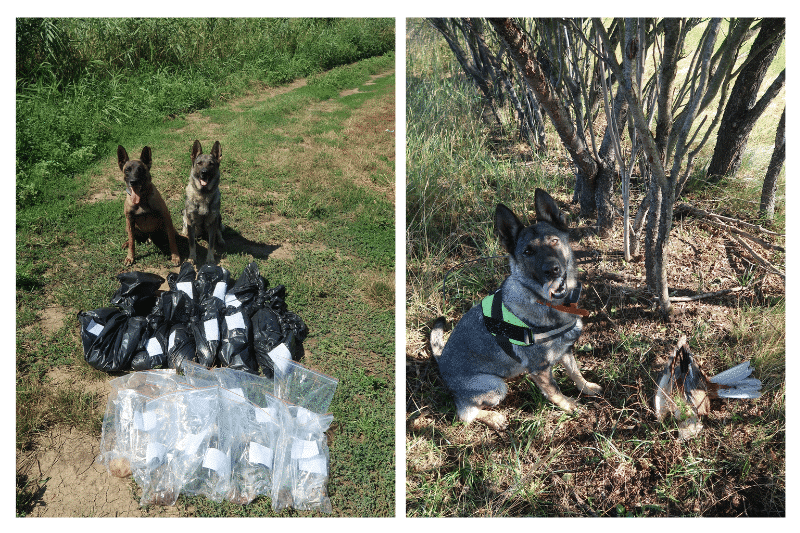
Hungary – poison detection dogs enable rapid crisis response
On the 16th August 2021, the most serious case of mass poisoning ever recorded in Hungary was discovered in the jurisdiction of a hunting association near Tura. The Carcass and Poison Detection Dog Unit of MME (BirdLife in Hungary), the ranger service of Duna Ipoly National Park Directorate and volunteers found more than a hundred poisoned baits and more than 50 poisoned animal carcasses. 96% of the carcasses were protected birds.
The rapid response of the poison detection unit meant that this local ecological catastrophe was contained quickly, avoiding what could have been an even higher death toll. The evidence and the carcasses suggest that the perpetrators used these strong neurotoxins in large quantities with the intention of killing birds of prey. This poison is not only harmful for birds of prey and smaller predators, but could possibly be dangerous to all kinds of animals and humans as well. This type of intentional poisoning is a serious criminal offense, and an investigation is ongoing.
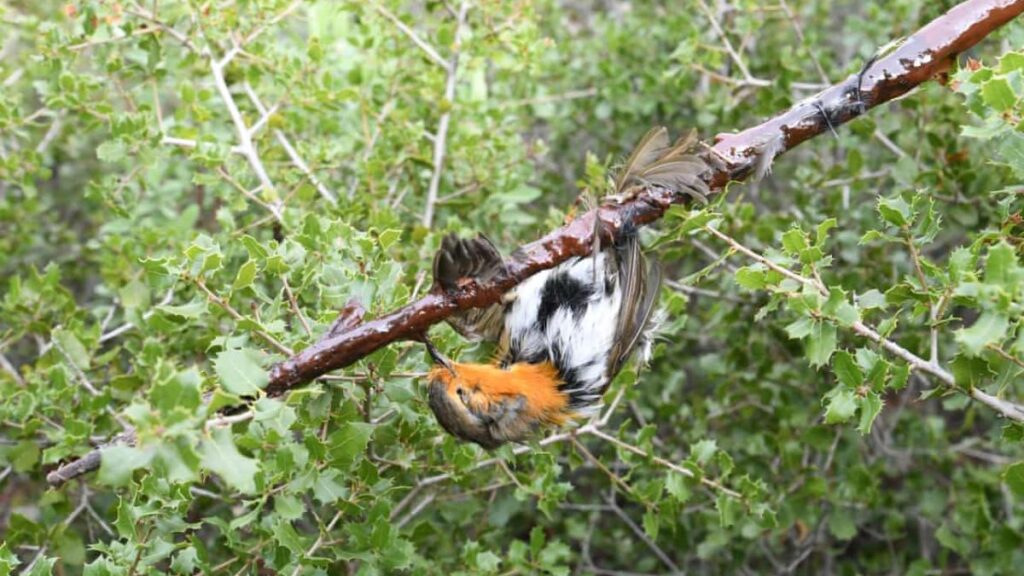
France – ‘barbaric’ glue traps now banned
Thanks to long years of battling in the courts, BirdLife’s partner in France, Ligue pour la Protection des Oiseaux (LPO), managed to put an end to the barbaric practice of songbird trapping with glue traps in France. Following legal action by LPO, France’s highest court has now ruled that this practice is illegal, saying that an exemption that had permitted it was in breach of European legislation. The European Court of Justice (ECJ) had earlier judged this practice as incompatible with EU law.
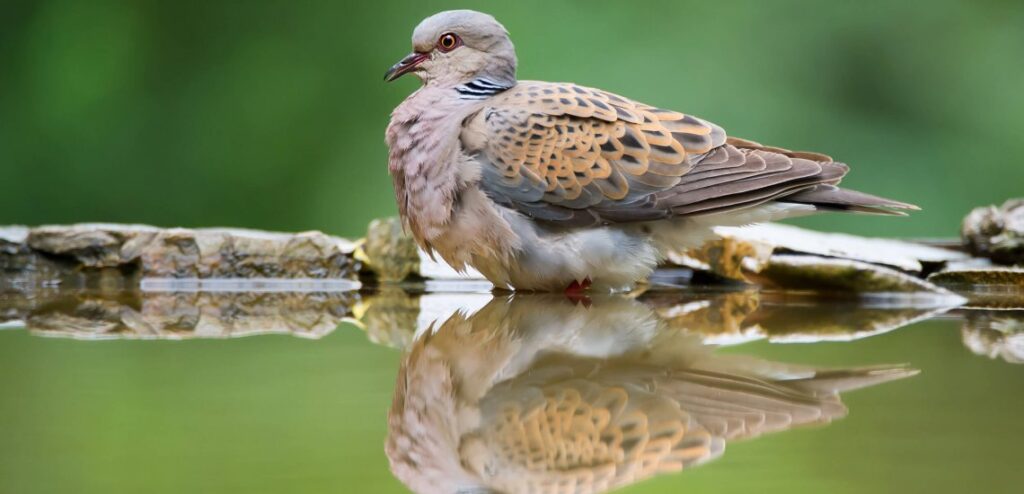
Turtle Dove hunting now illegal in several Mediterranean countries
The European Turtle-dove – a familiar and beloved bird that is widespread in culture and folklore – is now classed as Vulnerable to extinction. In Europe, its population has decreased by 30% in the last 15 years, making it one of the most threatened long-distance migratory birds in the world. The main reasons for this decline are habitat loss and degradation, primarily due to by intensive agriculture. However, the species is also the target of illegal and legal hunting all along its flyway.
With the adoption of temporary hunting moratoriums by several European and Middle Eastern countries, the tireless work of BirdLife Partners has bought this species some time. But is it enough to save them from extinction? 2021 is BirdLife’s Year of the Dove, and we will be calling on more countries to join France, Portugal, Spain and Israel in adopting hunting moratoriums to save this species and to put an end to the illegal killing that is rampant across the region.
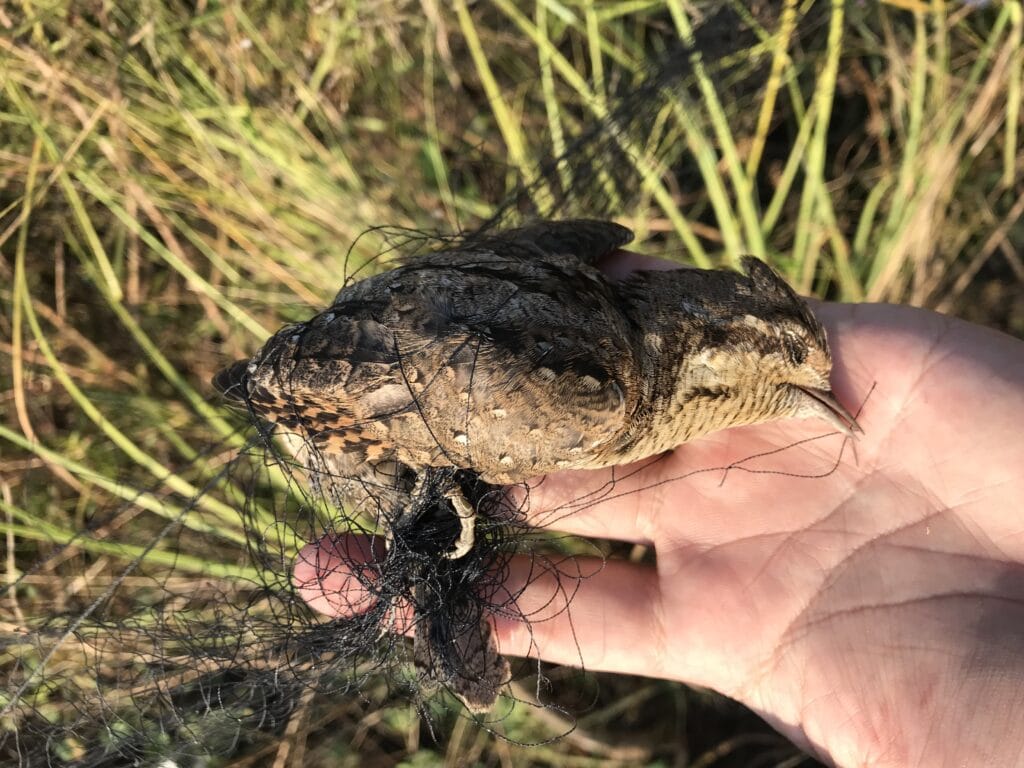
Thailand – campaign against mist nets
Our Partner in Thailand, BCST, has been promoting an awareness campaign on the use and dangers of mist nets to wild birds, while encouraging its members and birdwatchers especially, to report observation of mist nets used in trapping birds.
Cambodia – vital research into root causes of hunting
NatureLife Cambodia (BirdLife Partner) have been interviewing coastal communities about bird hunting in Koh Kapik, and have implemented surveys of bird hunting in rural markets in several Cambodian provinces. On the ground, they have also been working hard to strengthen enforcement against hunting in two key wetlands on the Mekong floodplain. In addition to this, the Cambodia team have met with government agencies to provide updates and discuss action to strengthen work on addressing hunting.
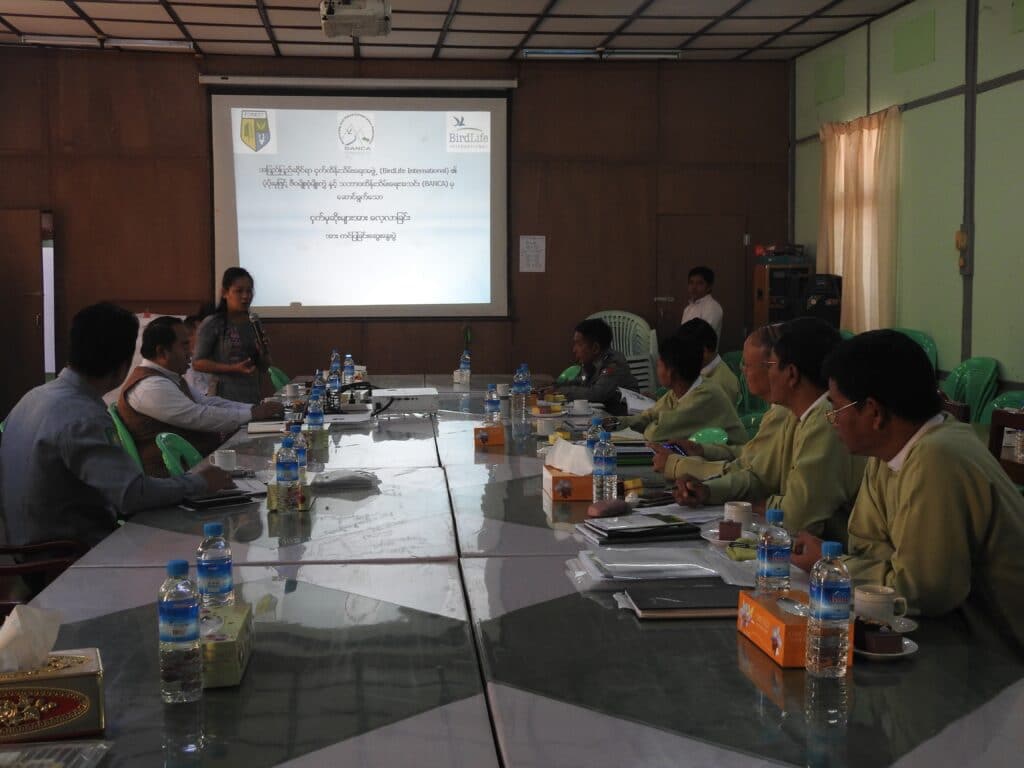
Myanmar – local conservation groups strengthened
BANCA (BirdLife in Myanmar) have been working hard to build local capacity to strengthen wetland protection, including addressing illegal bird hunting in the Mandalay region. Specifically, they have been building capacity of the Regional Wetland Conservation Committee and the local conservation organisation, ‘Shwe Kanthayar’ , who are established in the Mandalay region to help address bird hunting and other wetland conservation issues. BANCA has also organised consultative meetings with government agencies to report their surveillance findings of bird hunting.
Vietnam – groundwork laid for new hunting laws
The Viet Nature Conservation Centre have provided feedback to government agencies on the development of new policy directives at the national level to address the hunting of migratory birds. They have also performed surveys of bird shops and markets selling birds for food in Northern Vietnam to provide data on the issue to stimulate further enforcement action.
Guyana – major shorebird protection campaign launched
BirdLife have several allies and local researchers in Guyana, though there is no official Partner as yet. Guyana is well-known for harvesting great numbers of shorebirds for food, and the only protection the birds have is a ‘bag limit’ – the number of shorebirds allowed per day. There is no legal protection for Endangered species and no seasons for hunting.
Our local allies have been working on a social campaign to reduce shorebird harvest on the coast of Guyana, which is going to be implemented in the last quarter of 2021. BirdLife International will support the Leon Moore Nature Experience, North Carolina Museum of Natural Sciences, the University of Guyana and the US Fish and Wildlife Service to implement this challenging initiative.
It is expected that this project will establish a framework for collection of long-term survey data at key sites (vital to know the scale of the issue), install educational signage to raise awareness of shorebirds and their conservation needs, broaden social media impact on the issue, introduce local and international laws protecting shorebirds from overharvesting, and update IBA (Important Bird and Biodiversity Area) information, particularly along the Guyana North-East Coastline.
Thank you!
As you can see, we have made huge progress over the past six months, and donations to our appeal were integral to our work. The above is just a flavour of the huge amount of work done by the BirdLife Partnership against the illegal killing of birds – and our efforts are ongoing.
If you would like to support our work to tackle the illegal killing of birds, you can donate below.
BirdLife’s work on illegal killing throughout 2021 has also been supported by the American Bird Conservancy, the Global Environment Facility, the EU LIFE programme, Global Birding, the March Conservation Fund, the MAVA Foundation, the Nando and Elsa Peretti Foundation, the Oak Foundation, Vogelbescherming Nederland, the Royal Society for the Protection of Birds and, of course, the many supporters who have responded to our appeals. The work was further supported through membership of the Restore Species partnership and the Flight for Survival and Champions of the Flyways campaigns.
Stay up to date
Sign up to receive the latest bird conservation news. You’ll also receive updates about our projects, science and other ways to get involved including fundraising.
Thank you for your support, we are committed to protecting your personal information and privacy. For more information on how we use your data, please see our Privacy Policy. You can unsubscribe from emails at any time by using the link in the footer of any email from us.


A bustling market in Central Africa. Among the merchandise are birds trapped in cages, as traders haggle over prices. In West Africa, stalls selling bird carcasses are a reglar feature bushmeat markets across the region. These are just a few examples of the plight of wild birds not only in Africa, but across the globe. The truth is that illegal killing, taking and trade are driving wild birds to extinction. Recent studies have revealed startling numbers in the Mediterranean, Arabian Peninsula, Northern and Central Europe and the Caucasus. Across these regions, millions of birds are removed from their habitats every year – dead or alive – with devastating impacts on the populations of some species.
In the Mediterranean, Egypt loses about 5.7 million birds annually to these practices. The population of European Turtle Dove Streptopelia turtur, for example, has shrunk by 30-49% in 15 years, and is now classed as Vulnerable to extinction. Meanwhile, the European Roller Coracias garrulus has gone extinct in Germany, Denmark, Sweden and Finland, while the iconic Eurasian Goldfinch Carduelis carduelis has lost 56.7% of its range in the Western Maghreb due to extensive hunting and trading. Its rarity has led to an increase in price and the establishment of an illegal international trading network across the region. One goldfinch is currently worth $50 – nearly a third of the average monthly income in the area. Despite all this information, the extent to which illegal killing, taking and trade affect wild birds in the Sub-Saharan region is poorly known.
By Consolata Gitau & Alex Ngari
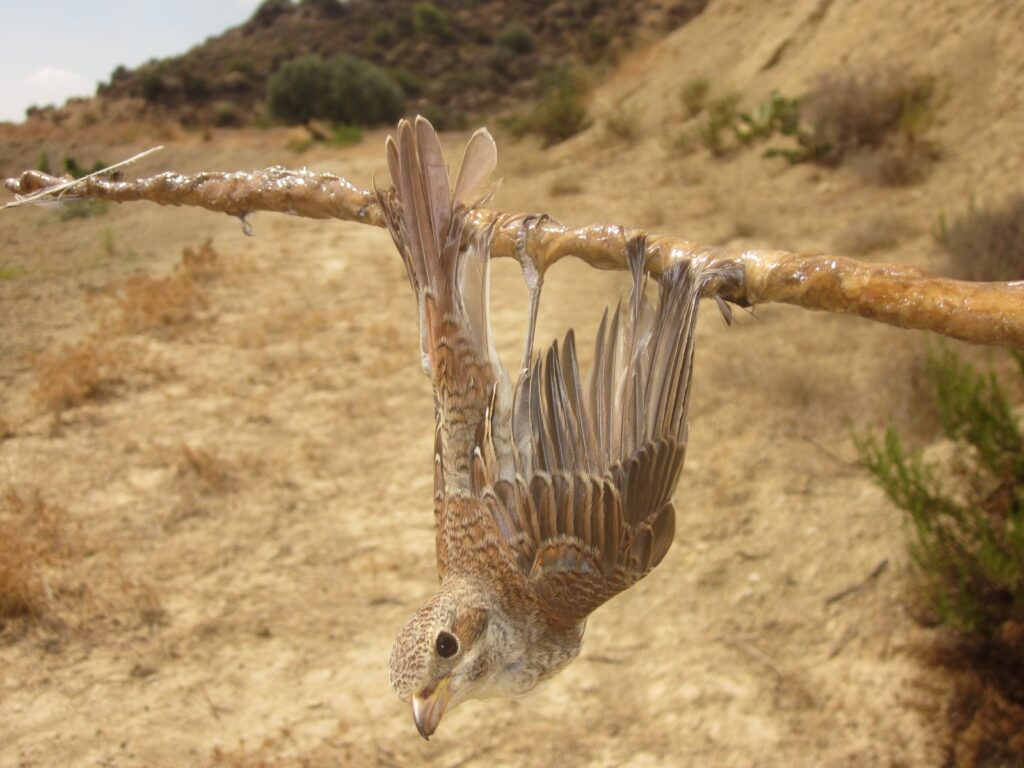
Unravelling trends in Sub-Saharan Africa
In Sub-Saharan Africa, the illegal removal of wild birds from their natural habitats is not well-documented. What data we do have, however, suggests that birds are hunted – legally and illegally in large numbers – for various reasons, with certain species being heavily targeted. For example, 97% of the 41,737 African grey parrots traded through Singapore in 2005-2014 were from African countries including Congo, the Democratic Republic of the Congo, the Central African Republic, Guinea, Ivory Coast, Cameroon, Liberia and South Africa, with Democratic Republic of the Congo being the main exporter. In South Africa, around 2 million birds were shot in 2013, and between 174 000 and 428 000 gamebirds illegally poisoned every year.
The trade of birds and their by-products could amount to a multi-billion dollar industry globally, for which Sub-Saharan Africa may hold a substantial share. Not only are birds in Africa traded for food and income, but also for belief-based use. These cultural beliefs and practices are a particular threat to large birds. In fact, vultures and African ground hornbills are at risk of extinction from this practice. In 2020, more than 2000 Hooded Vultures Necrosyrtes monachus (Critically Endangered) died in a mass poisoning incident linked to belief-based use, further underlining the plight of these birds across the continent.
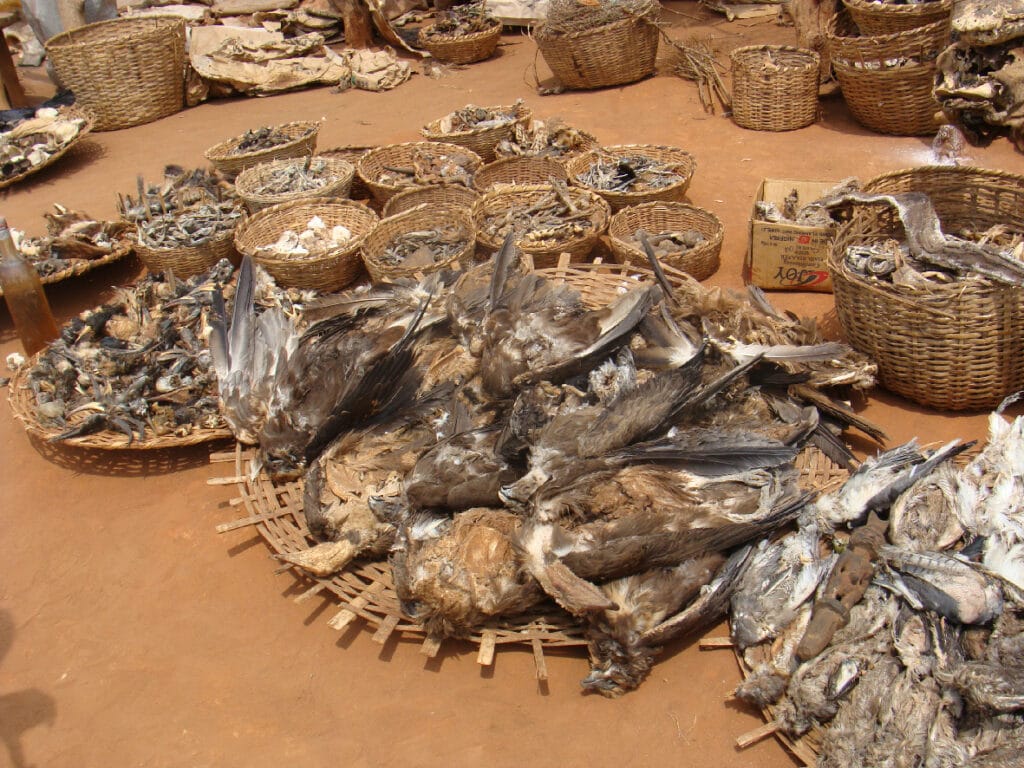
“With African bird populations experiencing such immense environmental and human pressures, and lack of sufficient data on the killing, taking and trade of birds, conservation challenges are mounting. Governments and other stakeholders are more likely to prioritize the conservation challenges of better-studied biodiversity such as large mammals, thereby putting the survival of avian species at stake,” says Alex Ngari, Migratory Birds and Flyways Programme Manager at BirdLife Africa.
As part of the initial steps to address the problem, BirdLife International has embarked on a study to review, collate, and compile all existing information on this topic in the Sub-Saharan region. The 8-month desk-based review seeks to document species, reasons, methods for illegal killing and taking of birds, and hotspot areas within relevant countries. The trends, gaps, reference lists and links identified in publications will be recorded to aid in further detailed research, through use of questionnaires.
“We are open to receiving data and information regarding the subject in the region. At the end of this study, a report on the status of killing, taking and trade of birds in Sub-Saharan Africa, including current data and gaps requiring further research, will be published and shared,” adds Ngari.
“BirdLife International’s idea at this stage is to build a strong knowledge base around the subject, thereby guiding follow-up actions, research and involvement with other conservation organisations, governments and researchers. We therefore invite any pieces of secondary information that may help fill the puzzle,” concludes Kariuki Ndang’ang’a, Head of Conservation for BirdLife in Africa.
This work is made possible through a grant from Conservation Leadership Programme. For further details and information, please contact Consolata Gathoni [email protected] and Alex Ngari [email protected].
“BirdLife International’s idea at this stage is to build a strong knowledge base around the subject, thereby guiding follow-up actions, research and involvement with other conservation organisations, governments and researchers. We therefore invite any pieces of secondary information that may help fill the puzzle”Kariuki Ndang’ang’a, Head of Conservation for BirdLife in Africa
